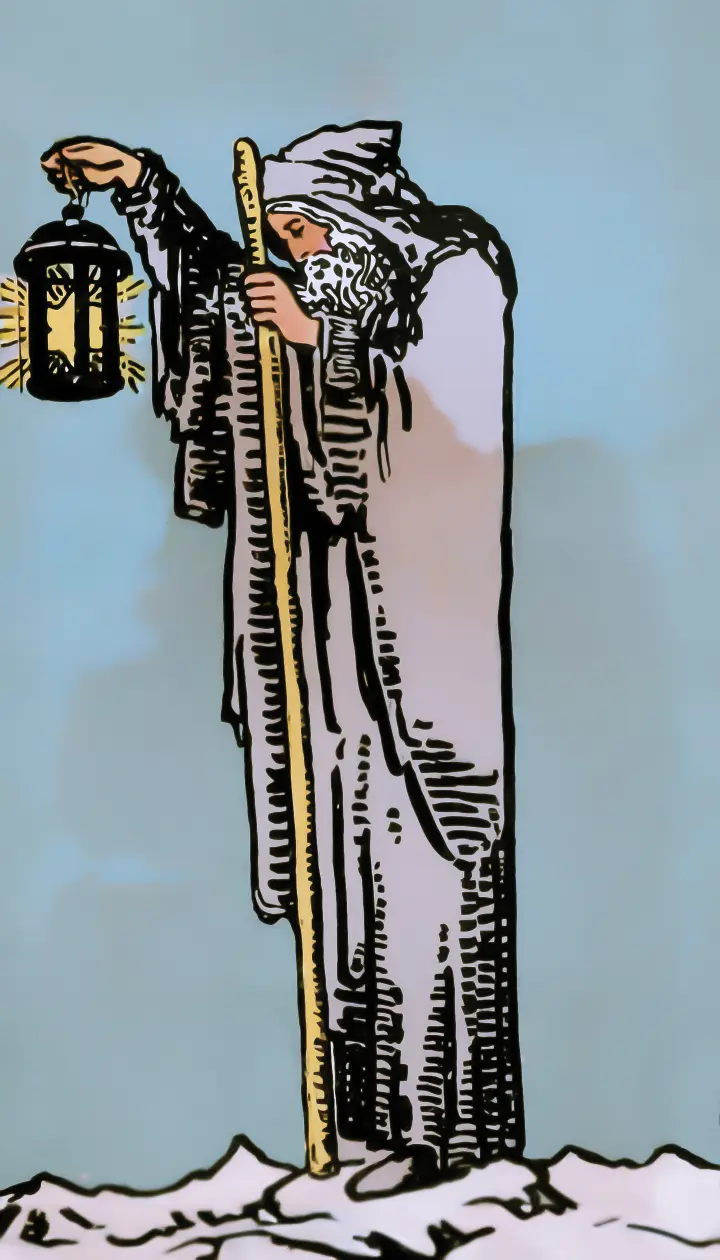
The Hermit Card Fully Explained
By DivinationToolThe Hermit represents the wisdom of introspection and the light found through solitude. This article explores the upright and reversed meanings of The Hermit card and its deeper role in spiritual growth and personal development.
The Hermit Card Fully Explained | Solitude, Wisdom, and Inner Light
Associated Information
Related Themes: Service and self-reflection Corresponding Astrological Sign: Virgo Element: Earth
Key Words
A symbol of wisdom, accumulated knowledge and wisdom, an inner search for light, pursuing truth in darkness, solitude, noble-mindedness, independence, contemplation, dedicated to inner growth, a phase towards wisdom, self-awareness, self-understanding.
Upright Interpretation
Upright, dignified, noble, wise, powerful, self-cultivated, possessing the wisdom of life, able to overcome difficulties with wisdom, offering correct guidance and direction, discerning, thoughtful before action, cautious in behavior.
The Hermit represents our confrontation with our own solitude. Often, driven by society and environment, we forget ourselves. The state of the Hermit is one of stillness, a pause to reflect on the self in action. In this spiritual state, we encounter the next card—the Wheel of Fortune. That is to say, the Hermit’s state reveals the nature of fate. Through this card, we honestly face ourselves.
Reversed Interpretation
Falsely noble, hypocritical, lacking dignity, incapable, internally lonely and isolated, lacking support, poor judgment, excluded, lacking sufficient wisdom, retreating, self-righteous, out of sync with the environment.
In reverse, the Hermit’s reserved nature disappears. There may be a pretense of wisdom and experience, while the qualities of a helpful mentor are lost, leading situations in the wrong direction and offering misguided advice. The lack of direction often results in restlessness and irritation, and overall plans may experience delays.
Detailed Meaning of the Card
The Hermit accumulates wisdom through experience—a sage outside the world, capable of guiding the way forward.
The Hermit’s path of exploration is an essential journey of self-cultivation. He may be a weathered, highly intelligent and experienced mystic, or an old man at odds with his surroundings. Yet the wisdom and energy he has gathered are sufficient to guide the younger generations. The lantern in his hand shines in the darkness, illuminating the path—a path of wisdom, and the most correct direction. Holding the lamp of wisdom, the Hermit clearly represents the one who possesses true insight. Though aged and seemingly alone, the pursuit of wisdom remains his lifelong dedication.
Standing atop a mountain, the Hermit is the oldest figure among all the cards, embodying rich life experience. From this peak, he seeks the stairway to heaven. If projected onto a person, this card may indicate an old soul—frequently introspective, eyes closed in deep thought, journeying inward in self-examination. The grey and somber background represents solitude, but this solitude fosters personal growth, pushing one forward on their inner path (requiring one to step out from the crowd, form independent thoughts and perspectives, and walk a path not yet taken—symbolizing that no one can walk with you; solitude is a fundamental experience and a cost of growth).
The six-pointed star (Star of David) in his hand offers guidance to those at the foot of the mountain—like a lighthouse, symbolizing a mentor’s signal. Compared to the Hierophant, who is a warm guide among the people, the Hermit is a mentor distant from society, isolated from the external world. He requires one to approach him personally before revealing his inner wisdom.
In the workplace, this card can suggest changes (such as the company laying off senior high-salary staff). During job hunting, however, it can indicate the presence of a helpful guide. Because of its guiding nature, this card is also beneficial when searching for lost items. On the path of life, as we keep moving forward, we naturally encounter phases of development. What we must learn is how to accept and embrace solitude—how to soothe ourselves through different stages of loneliness, and find peace within that solitude.